As we bid farewell to the year of the Horse and welcome the new lunar year of the Goat, Diacritic Lien Truong asked four influential contemporary art spaces in Vietnam to reflect on this previous year and pick an exhibition or event in their programming that had significant impact on their mission and creative cultural climate. The series of posts will highlight events from Manzi Art Space and Nha San Collective in Hanoi, and Galerie Quynh and San Art in Ho Chi Minh City.
Nhà Sàn Collective: Maturing under Creative Censorship
24 Lý Quốc Su, Hà Nội, Việt Nam
Most of us in the west will never know what is like to make creative work under strict censorship. In 2004 while I was an artist-in-residence at the Oakland Museum of California, I was given a message that the Department of Homeland Security had called the museum asking for me, and would like a call back. I found out that the only other person they contacted at the museum was another woman of color, an artist of Latino descent, although I do not know if she, too, was an immigrant. In an act that could have been the product of youthful defiant stupidity, I did not comply. I figured if it was REALLY important, then Homeland Security would call me back. They never did.
The beginning of Nhà Sàn:
In 1998, artist Nguyen Manh Duc and artist/curator Tran Luong founded Nhà Sàn, the first experimental art space in Hanoi at Nguyen’s private home: a Muong ethnic minority house on stilts, transported from the mountains of Hoa Binh province to the capital. Here, the first generation of Vietnamese avant-garde artists in Hanoi, including Nguyễn Minh Thành, Truong Tan, Nguyễn Quang Huy, Pham Ngoc Duong, Nguyễn Mạnh Hùng, Nguyễn Minh Phước, Le Vu, Kim Ngoc, Son X, Ea Sola etc., were given the chance to create, experiment and take creative risks; making Nhà Sàn Studio the first, longest-running, artist-led, non-profit experimental art space in the country.
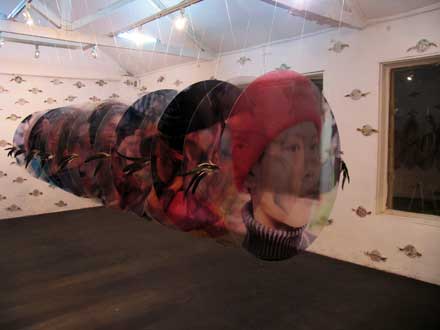
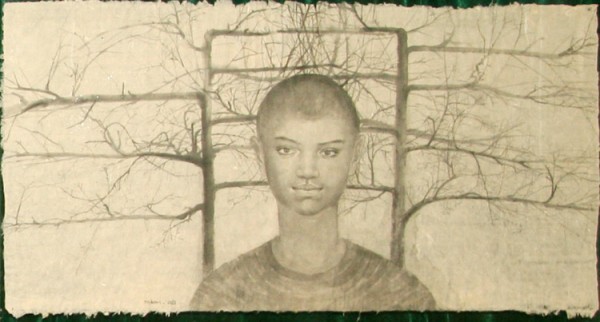
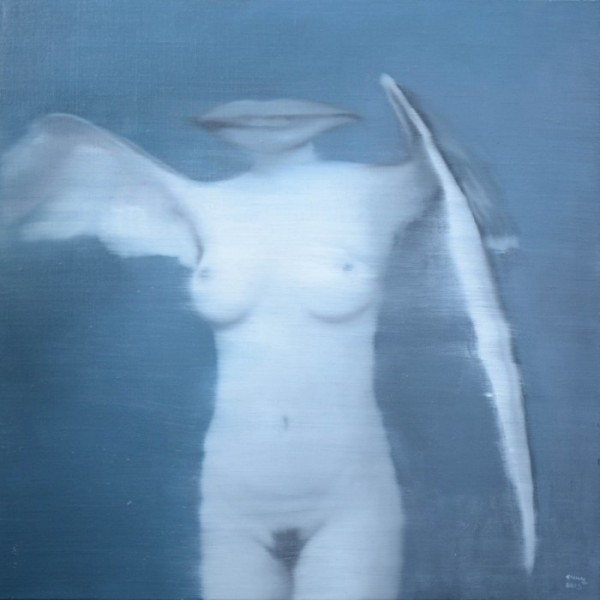

It has since become a valuable resource for a younger generation of artists, including Nguyễn Trinh Thi, Nguyễn Phương Linh, Nguyễn Trần Nam, Nguyễn Huy An, Appendix, Tuan Mami, etc. In the last fifteen years, Nhà Sàn Studio has hosted underground alternative art exhibitions and events in the local scene.
Nhà Sàn was established to facilitate art making that went beyond the confines of traditional painting and transcend the belief that creative integrity was based on commercial success. It became a meeting place for all: classical and experimental artists, emerging to mid-career, an artistic space for artists to engage in interdisciplinary and experimental ways of art making. Performance art became a natural mode as the artists responded to the politicized environment which they made work in. For the artists of Nhà Sàn, the breadth of possibilities and gestures in performance meant the artist could reflect into the very fabric of their cultural history and political circumstance.
In Nguyễn Phương Linh’s Moving Mountain, she asked the audience to pour 45 kg of rice into her mouth, her equivalent weight. Under the pressure of the mountain of rice, the artist held her breath until she couldn’t anymore, and repeated the performance until exhaustion took over. While her concept was born out of the desire to respond to the poverty in Vietnam, the rice seemingly acts as a metaphor of the oppression of inherited and political traditions, thousands of individual white noises stifling her until she can no longer breath, and a testament to individual and collective endurance.
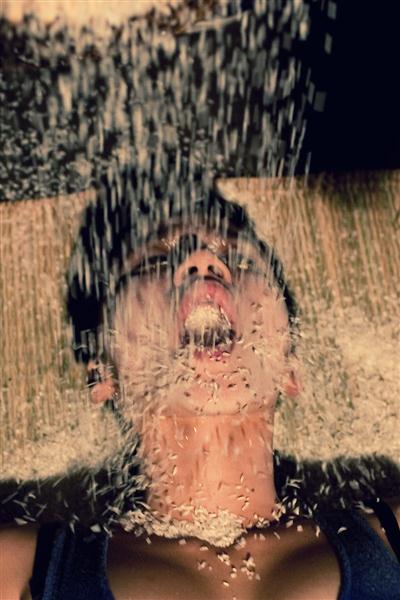
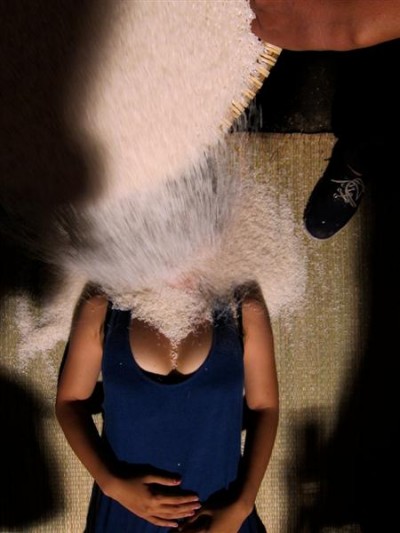
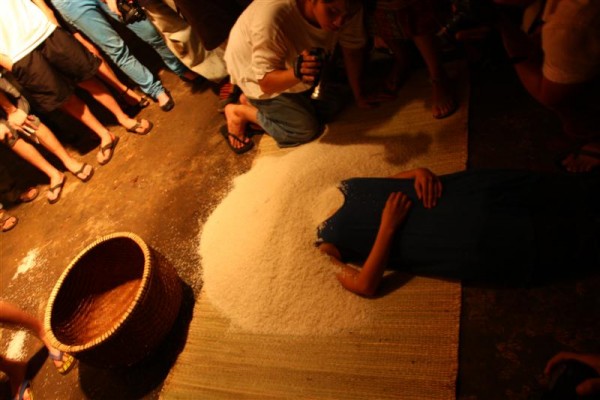

In 2010, In:Act, the first performance festival took place, and the last piece by artist Lại Diệu Hà contained some nudity. Nhà Sàn had gained a notable reputation for its artistic integrity and the festival was well attended by journalists and the public. The next morning, pictures of the performance were carelessly publicized, including Lại Diệu Hà’s piece, and given no creative and cultural context for its viewers. Media scrutiny turned to police regulation, eventually yielding to the political shutdown of all of Nhà Sàn’s exhibition activities.
Under such restrictive political environment, the Nhà Sàn artists have never stopped adapting their creative process. They found other ways to continue working, realizing the role of an alternative art space while providing important individual and collective support to the artistic practices of their peers. Nhà Sàn Studio became Nhà Sàn Collective. They created large-scale projects collaborating with the Goethe Institute, the Japan Foundation, among others, as well as many mobile, guerrilla events in public.
In 2013, Nhà Sàn opened in an abandoned medicine factory in Zone 9 of Hanoi. The new space became working studios, exhibitions and workshop space. Within this model, young artists continued to have access to critical in-progress critiques with one another and mid-career artists, with experimentation and exhibition emphasized. Nhà Sàn artists joined their peers in other artist-run spaces. The artist became manager, curator, media liaison and mentor.
Nhà Sàn is confronted with the roadblocks of non-commercial art spaces, including lack of funding, but topped with the lack of a supporting legal system. With these challenges, its artists show how creatively prolific they can be. Six months of artistic activity bore 2 festivals, 11 exhibitions and 11 open studios. Nhà Sàn’s greater plans included international programming and the beginnings of an artist residency. In January of 2014, the entire complex that Nhà Sàn was located in was closed down by the government due to problematic safety codes. In 2015, Nhà Sàn Collective will launch a new space located in the cultural complex of Hanoi Creative City. While an actual space is important to the many layers of the Collective’s practices, they have experienced and learned to adapt.
Nhà Sàn has formed itself into a band of nomadic creative practitioners.
15+
Nhà Sàn held a reception and exhibition to celebrate its 15-year anniversary. This time frame is significant. It is long enough to influence a whole generation of artists, for its young artists to have ingested their philosophies and experiences and grow into creative maturity. The anniversary was also documented through a type of pocket dictionary by artist Thao Nguyen. Working with artists who have been in association with Nhà Sàn in the past 15 years, Thao Nguyen collected constitutional objects from their creative processes to construct a dual information system, comprising of an installation piece at the 15+ Exhibition. This pocket dictionary of Nhà Sàn presents a statement about the “presence of an art community and, at the same time, establishes a network that is mobile, open, free and democratic; a guerilla system in a virtual space that drifts beyond censorship; where an artist’s identity is appraised through his work and art is represented by the practitioner.”
15+ and pocket dictionary: http://tudiennhasan.com
Nhà Sàn website: http://www.nhasanstudio.org/web/
Documentary of Nhà Sàn’s History:
http://hanoigrapevine.com/2014/10/documentary-history-nha-san-collective/

–
Lien Truong is a Vietnamese-American creative and exhibits her artwork in transcultural locations. She is currently Assistant Professor of Art at the University of North Carolina at Chapel Hill.
Do you enjoy reading diaCRITICS? Then please consider subscribing!
Please take the time to rate this post (above) and share it (below). Ratings for top posts are listed on the sidebar. Sharing (on email, Facebook, etc.) helps spread the word about diaCRITICS. And join the conversation and leave a comment!




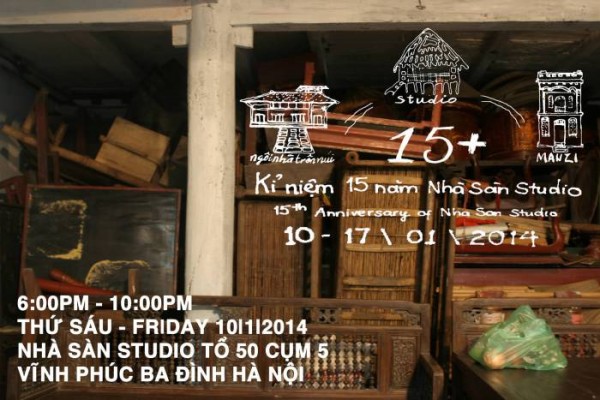
Hi Lien, thanks for the post. Since you are accepting suggestions for correcting errors, you may want to change the name of the 2010 Performance Festival to In:Act rather than simply “Act.” And the performance collective is called “Appendix” and not “The Appendix.”
I just wanted to quickly give proper attribution to the last image in this nice article. The image, which is simply credited as ‘Nha San Collective’, is a still from an important video installation by Nguyen Trinh Thi (who is a member of the collective). The work is called ‘Unsubtitled’. It was originally presented at Nha San Studio in 2010, was part of the 2013 Singapore Biennale and was a current finalist in the Signature Art Prize for 2015 – https://www.singaporeartmuseum.sg/signatureartprize/gallery_details_9.php . It is comprised of 19 life-sized cutout screens with video loops from 10 HD projectors with audio. Thanks.
Thank you so much for the attribution Jamie!!